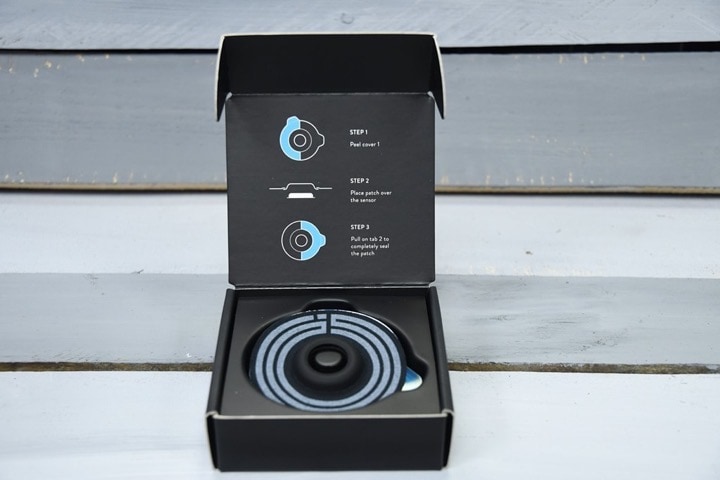
Continuous glucose monitoring platform sports tech startup Supersapiens, has announced it’s shutting down. The company had been using Abbott Labs continuous glucose monitoring patches, in conjunction with their own app/platform, for the last few years in Europe. The general idea was that you can more accurately train and race, specifically for longer endurance events, by monitoring glucose levels. These are the exact same patches used for monitoring diabetes in various countries. The only difference was that Supersapiens had a software layer above it.
Supersapiens was never able to get approvals to operate with customers in the US or Canada, and thus was limited to a set of European countries, significantly reducing their potential market area. A compounding factor was that the UCI also banned their use in competitions (as the UCI often does when they don’t understand tech), limiting the visibility of their product for pro cycling teams.
Here’s their announcement, in full, sent out to active members:
Dear Customer,
As a valued member of the Supersapiens community, we owe it to you to be transparent and direct about significant changes that impact our service and your experience.
It is with a heavy heart that we must announce that Supersapiens is going through a strategic restructuring and this will affect our services and your experience with us. This decision comes after considerable efforts to navigate an increasingly challenging business environment, and it is not one we have taken lightly.
As a result of this closure:
Shipping of Sensors: We have ceased the shipment of all sensors immediately.
Memberships: All memberships have been terminated.
App Functionality: The Supersapiens app will continue functioning for the foreseeable future, allowing you to access historical data for another 45-60 days. However, we will no longer provide updates, feature enhancements, or customer support.
Dashboard and Integrations: Your access to the Supersapiens dashboard will remain available until March 31, 2024. We encourage you to download and save any data you wish to retain. All third-party integrations will be discontinued. We recommend reviewing any connected services to adjust your settings accordingly.
To check for updates, please reach out to support@supersapiens.com.
Your trust and support have been the foundation of Supersapiens over the years. Together, we’ve pioneered a market and fostered a community that recognizes the transformative power of glucose. Your contributions have been invaluable to our growth and evolution. We are all Supersapiens.
While we navigate this period of strategic restructuring, we remain committed to our mission and optimistic about the future. The legacy of innovation and community we’ve built together will continue to influence the evolution of metabolic health insights and analytics.
Thank you for your understanding, support, and trust in Supersapiens. Serving you and being part of this vibrant community has been our privilege.
With heartfelt thanks,
The Supersapiens Team
While the company doesn’t explicitly state they are shutting down (the title of the e-mail was “Important Customer Service Announcement”, I’m not sure how else you could interpret the above.
My Experience Using It:
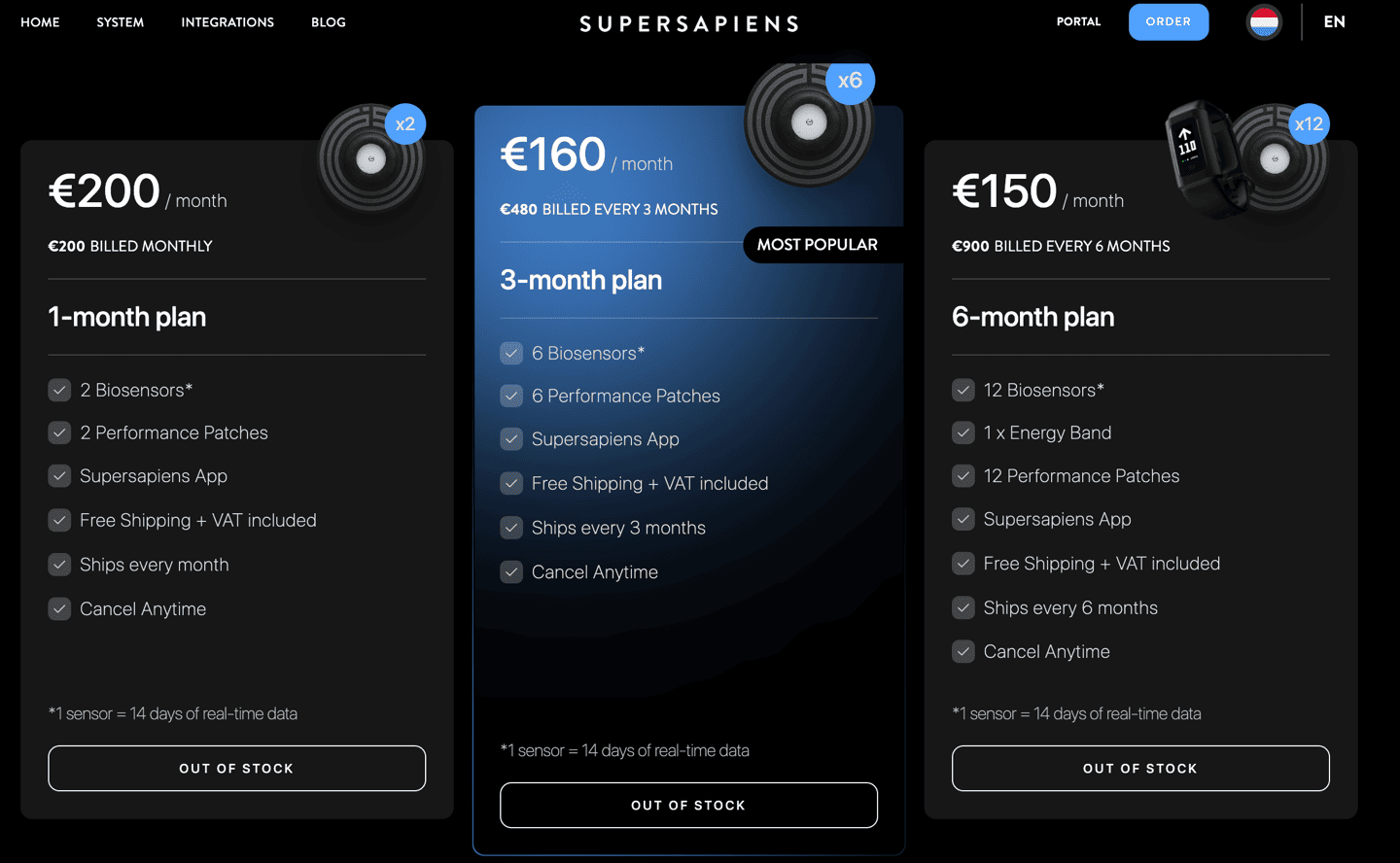
In most ways, this does not surprise me. I actually wore a Supersapiens patch for quite a long time, across numerous seasons and numerous training types – from swim to bike to run, indoors and outdoors. I was always hesitant to dive into a full review, because as you’ll see, my body seemed to respond differently to virtually everyone else that used the product.
Starting off quite a quick overview, the Abbott labs patches were worn continuously for 14 days (exactly 14 days), which includes all the time in between. The patches had a very tiny filament (basically a needle) that was injected into your arm. Generally speaking, the sound of the injector was far more scary than the actual poke. For those monitoring diabetes, this is nothing new. However, from an athletic standpoint, the practical aspects of the product could sometimes be challenging.
The higher amount of time a triathlete spends in the pool (or open water) would degrade the lifespan of the sensor glue quite a bit in my testing. As did simply the increased number of showers you’d take to accommodate multiple workouts per day (especially if spread out morning vs afternoon/evening).

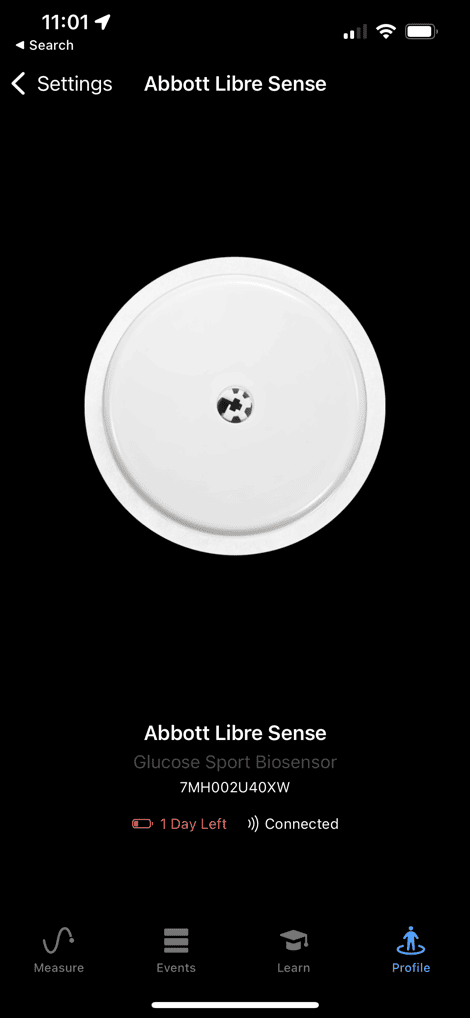
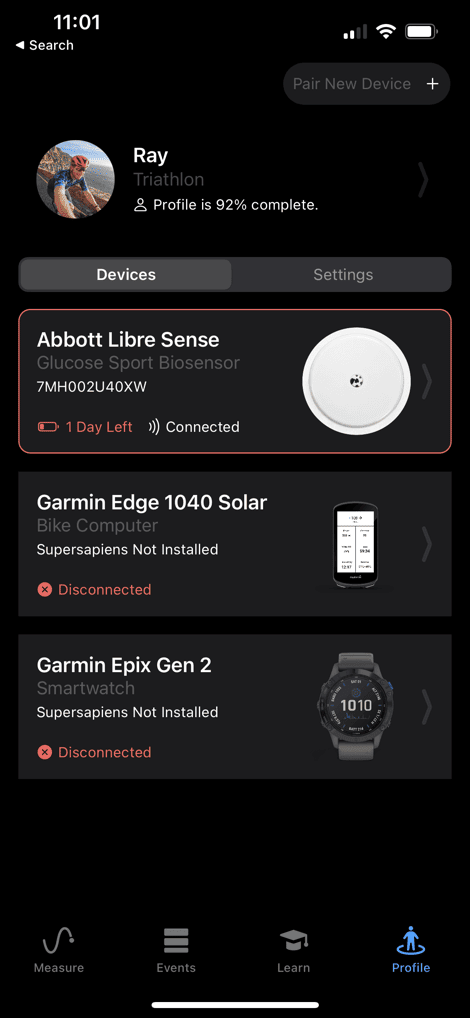
But ultimately, the biggest challenge I had in the tech that I could never reconcile is the actual numbers it would give me. As a brief background, the rough idea of CGMs is that you can monitor your levels in real-time, and then fuel appropriately. In a nutshell, this is all about fueling to avoid a bonk. You would see this number in real time either on the phone app, a Garmin Connect IQ app, their custom band (kinda looked like a Fitbit), and a few other partnerships as well.
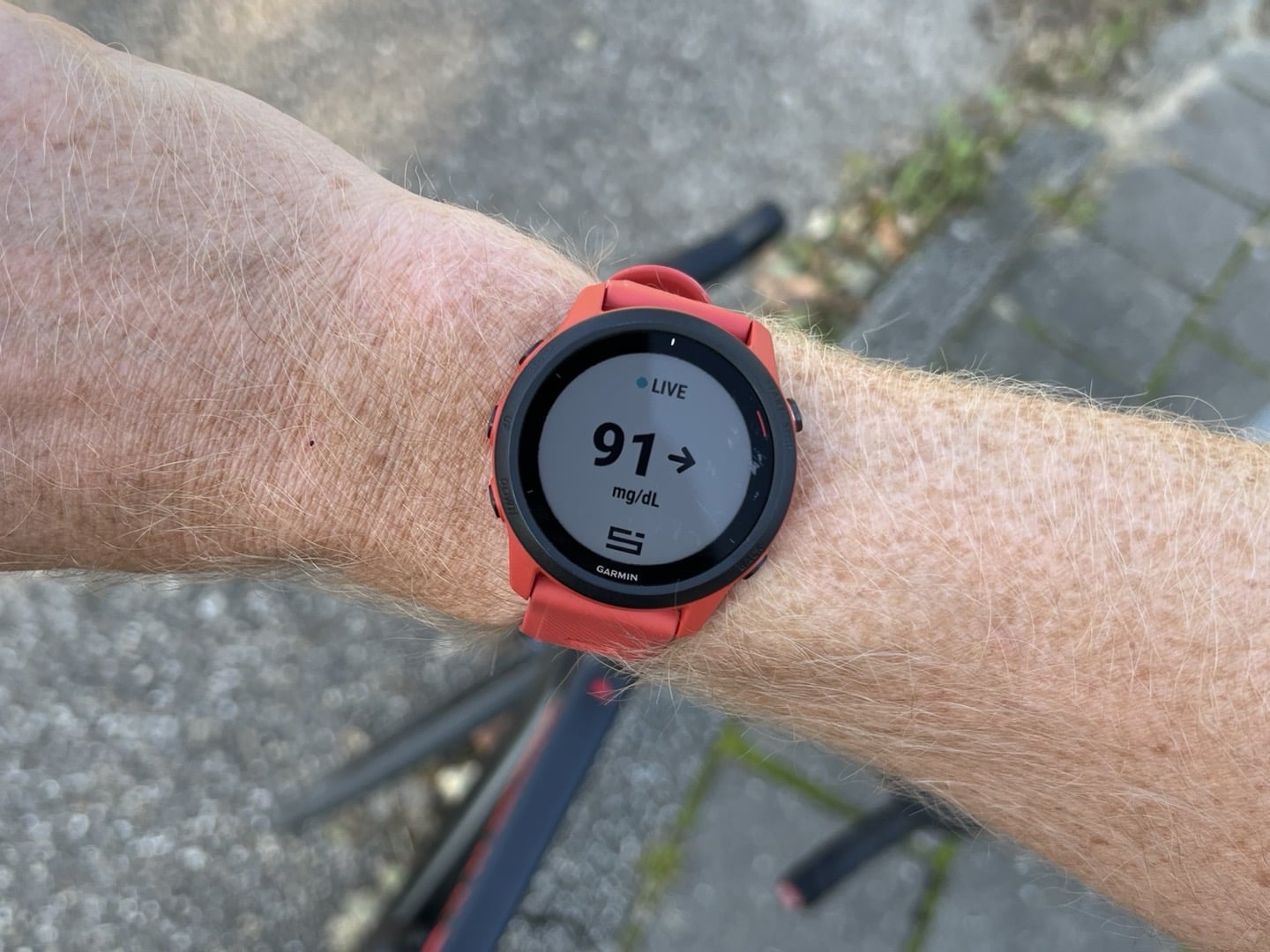
Note that for some of these integrations (including Garmin), you had to have your phone with you, due to connectivity restrictions imposed by Abbott Labs. You could work around this if you bought their extra band accessory, but that was cumbersome and literally just ran Android atop it. Thus, it was a battery blowtorch. Wahoo ELEMNT units also had a direct option too.
In the case of Supersapiens, they were really targeting workouts 90 minutes and longer – and more specifically, steady-state efforts (not intervals). Under 90 minutes, and you were unlikely to see enough data to draw any conclusions, and with intervals, it was too variable.
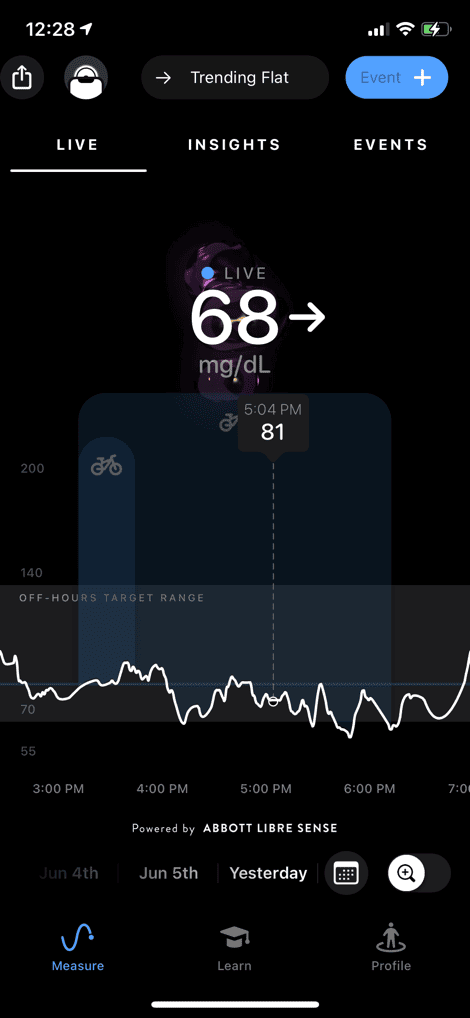
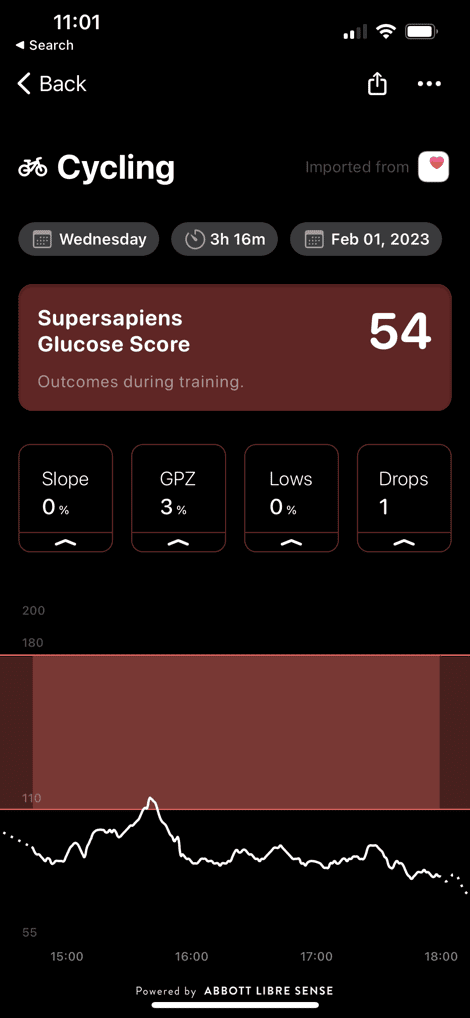
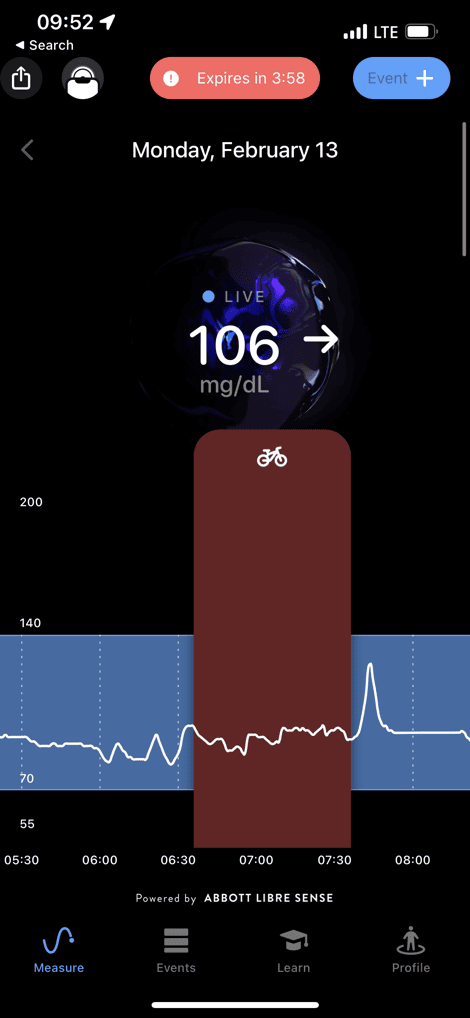
The way the data would work is that theoretically for most people, your mg/dl value would increase, ideally to the upper 100s (e.g. 160-180), and then you’d manage fueling to keep it there. There would be a slight lag in the numbers (~10-15 mins) as you consumed nutrition, but it would be enough to avoid a hard bonk that endurance athletes see.
But that was only if the numbers did as the limited body of science assumed they would: Go up as you increase intensity.
In my case, I was one of the special group of people where the numbers actually go down. Literally, I’d go out for a run, ride, or anything – for many hours – and my numbers would simply drop down and stay in the 50-80 range. During the rest of the day, I’d be in the 80-100 range. Eating foods and such would briefly spike the numbers, but otherwise I’d stay low during workouts. You can see this in my screenshots above – including a 3hr ride, that basically just flatlined low.
I discussed this at length with Supersapiens (including in-person meetings), but there wasn’t a real answer here, because I fell in that group of special people. The body of science that understands how this works simply didn’t account for me. And when you were paying many hundreds of euros per month for this solution, that’s a tough gap to account for. And that’s aside from cases where the sensors just outright failed to register data well at all.
While their analytics platform was actually pretty good and easy to use, including plenty of direct integrations with Garmin, Apple, and more – when the underlying data was questionable, then the platform as a whole became tough to justify.
Going Forward:
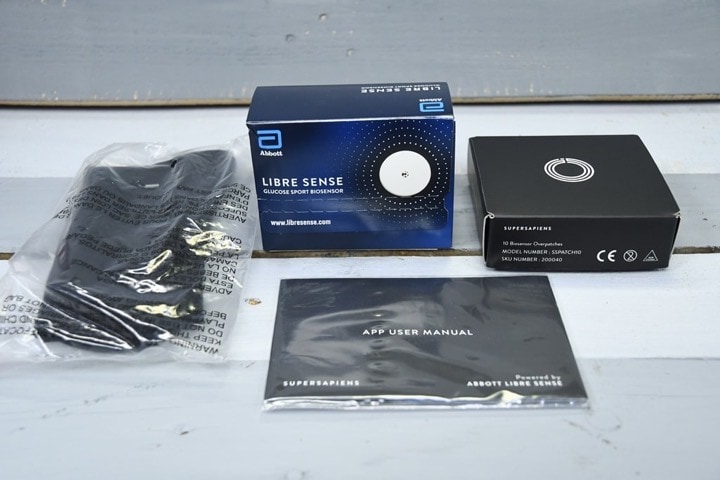
Ultimately though, the core reason Supersapiens likely failed (in this case, their investors probably pulled the plug), was that the path forward to getting traction in the US from an approvals standpoint wasn’t viable. And undoubtedly, they were looking at European numbers, and not seeing significant growth. Additionally, their complete dependence on Abbott Labs was rather problematic for a tech company that wanted to move fast – it led to things like requiring a phone for all communications with a Garmin watch or bike computer, certainly not something ideal for a triathlete in a race.
The company recently tried to start pivoting the US business towards diabetes management, and as part of that opened up another round of fund-raising. Except, this time, they actually listed all their numbers publicly, and considering they’d been around a few years – the revenue metrics weren’t good. Net revenue for 2023 was looking at around 1.3M euros. You can see all the stats here.
It’s possible in another timeframe, if the science around using continuous glucose monitoring in endurance sports can catch up, then maybe there’s room for a product like this in the future. Hopefully though, all those employees can land on their feet. Supersapiens might have been ahead of their time, but unfortunately, only time can tell.
Thanks for reading!
FOUND THIS POST USEFUL? SUPPORT THE SITE!
Hopefully, you found this post useful. The website is really a labor of love, so please consider becoming a DC RAINMAKER Supporter. This gets you an ad-free experience, and access to our (mostly) bi-monthly behind-the-scenes video series of “Shed Talkin’”.
Support DCRainMaker - Shop on Amazon
Otherwise, perhaps consider using the below link if shopping on Amazon. As an Amazon Associate, I earn from qualifying purchases. It doesn’t cost you anything extra, but your purchases help support this website a lot. It could simply be buying toilet paper, or this pizza oven we use and love.

















That’s too bad. I always liked the idea of Supersapiens, though the price of it (as well as similar solutions like Veri) is, while understandable, still high for an amateur athlete. Hopefully, the other companies learn from this and adjust to keep the push going.
I am type 1 and having the Libra cgm device has been a life changer. I can now train better with some confidence. I was intrigued by Supersapiens and how they built a software platform to make the data useful. Knowing how the devices are still not great at keeping connected, lots of signal drop out, I wondered if they had improved that too.
Linking a cgm to a pump with some intelligent software that learns how the user responds would be another level excellent.
Tamdem T-Slim x2, Omnipod 5 and Beta Bionics iLet all connect to the Dexcom G6. The Medtronic 780g connects to Medtronic’s CGM. The OP5, 780g and the iLet all adjust the aggressiveness of their algorithms based on Total Daily Dosage of used insulin, which means if your insulin needs suddenly change, you just have to compensate for a few days/weeks until the algorithms learn your new normal. The Tandem X2 has the most twrakable commercial closed loop system on the market. The most tweakable systems are the Do-It-Yourself systems like Loopkit, AndroidAPS, iAPS, and OpenAPS. Closed Loop delivery is life changing.
As a coach to riders with Type 1 diabetes, I can tell you that glucose and how it trends varies greatly with the athlete. I received two days of training with Novo Nordisk and there is a ton of data that can be used to predict but ultimately any given athlete will vary day to day based on what they consumed or what they did. Some will also go up as a result of a hard effort because of hormonal activity and some will generally go down. I’m sure with generative AI, the reliability of predictions will increase but until then, unless someone is an endocrinologist or has some training in this area, it is complicated. Thats why we have closed loop insulin pumps. Humans are no match for the pancreas.
Dear DC, what did you eat while training such that your blood sugar stayed low?
Small correction: Select Wahoo head units could talk directly to the sensor without a phone (Garmin needed a phone).
I actually liked the product a lot and I do think it was a game changer. The price point is hard to swallow though and the numbers they released were quite shockingly low.
When is a closure not a closure? When it is a strategic restructuring! Let’s be transparent and direct about this.
I’ve tested the Ultrahuman Ring AIR extensively which has the (Ultrahuman M1) option of adding Abott CGM and calibrating that sensor against a blood glucose test. For sprint athletics, I’ve found it invaluable to have Garmin and MFP integration direct onto the Ultrahuman M1 glucose timeline, to include some very unexpected, advantageous results.
Honestly I’m not surprised. I’ve been using Supersapiens for more than 2 months with the objective of avoiding bonking in ultra training. I couldn’t see any added value of continuous glycemia monitoring vs my own feeling. I’d almost say that my feeling enabled me to predict hypoglycemia quicker and with better accuracy than the sensor.
It’s disappointing to see SuperSapiens go. You might consider trying Ambrosia’s Champion, which can directly connect to both Apple and Android watches. It’s far ahead of any other product in this segment.
Thanks for the writeup Ray. Had been considering this product after reading your review a while back, but the cost of service and their business model were big reasons I opted against. While not the same, happy to have purchased a Core body temp sensor instead, which could never fully fall victim to a similar scenario.
This is yet another reason why I NEVER buy hardware which *requires* a subscription, manufacturer service/business operations/’current management or service offering decision’ to remain steady, or any other reason a product which I’ve paid for in full which may stop functioning before end of life of the hardware. For example me breaking it, battery no longer charges, etc.
I don’t care if it’s a car or an alarm clock, if I pay for that *product*, a physical item, I expect it to work whether or not I continue to pay a recurring ransom (subscription). Anything else feels like if I didn’t pay my local mobster for their monthly ‘protection’ and my business accidentally burns down the next day. It’s a shakedown.
If they want to sell me a service, give me the service dependant product for free. If you sell me a product, it must function whether I pay for their additional service or not. Kinda like how if I rent a car, I pay by the day, week, and so on. I don’t pay for the car, and then the subscription too! Anyone who does is feeding into these predatory business models, and as much as I liked the idea with this tech I’m glad to see yet another of these business models fail and hopefully continue proving to other businesses it will fail for them too.
Supersapiens did not require a subscription, but it was expensive. I had a sensor sitting around for the last few months and this was the incentive to pop it in and give it one last shot!
Supersapiens wasn’t a subscription service. The subscription part related to getting new sensors delivered to your door every 1/3/6 months etc. However, you could stop, cancel or restart this at any time without affecting the use of the sensors. I got 6 sensors for occasional use a couple of years back on special offers and immediately cancelled my subscription, and the sensors/app still work fine.
Family doctor by training here, and Ray’s experience sounds expected for someone who does not have diabetes. For people with a functioning pancreas, their body is able to regulate blood glucose levels generally in the 70-110mg/dl range. There may be spikes above that briefly with meals and snacks and after maximal or endurance exercises but generally the pancreas will release insulin to get the blood glucose back around the normal value of 100mg/dl quickly.
Diabetes is diagnosed with a hemoglobin A1c of 6.5 which is calculated as an average glucose level over the prior 3 months of about 139 mg/dl, and the higher BG results when the body isn’t able to adequately produce insulin to reduce it.
Although there is some evidence that endurance athletes spend more time outside of the normal range with meals (hyperglycemia) they often have lower fasting blood glucose levels.
For those who are interested to learn more, there’s a nice summary paper that goes into more detail. link to link.springer.com
But in the end, it is not surprising that there would not be a critical mass of non-diabetic athletes who want to spend that amount of money to be told that their metabolism and homeostasis mechanisms are working as expected. Professionals might be able to get marginal gains by identifying trends to hypoglycemia to replete glucose before the bonk, but if they can’t use it in competition, and are competing frequently, they likely won’t get the full 14 day value of the sensors, further increasing the expense to utility ratio.
Thank you doctor for that link. However, I found the spin in it troubling. Fundamentally diabetes represents a dysregulation in blood sugar levels. Moreover, we know that diabetes is a chronic disease. In America, over 25% of people age 65 and above have diabetes whereas the overall prevalence in the population is roughly 10%. Which is to say that elderly people have a rate 2.5X that of the general population. Put another way, it is axiomatic that insulin resistance increase with age. Finally, one of the most popular theories as to the etiology of diabetes is the “spike hypothesis” viz that pathology of diabetes is driven by repeated excursions of blood glucose levels above the normal range.
So the question then becomes what are the long-term ramifications of endurance driven hypo- and hyperglycemia? I don’t take it as a given that even if there are short term performance gains to be made in endurance athletes from blood glucose levels of 140+ that the risk is worth the reward. If diabetes is blood sugar dysregulation then deliberately dysregulating blood sugar in search of athletic enhancement is playing with fire–it might even be the steroids of our time. I can’t think of any medically sound reason to encourage such behavior, especially when this kind of endurance training is not necessary to maintain health.
Thanks for commenting and the discussion- I didn’t interpret the information in the paper the same way I think you are suggesting.
My takeaway was that they have observed spikes in endurance athletes but haven’t identified any evidence that those spikes over time have caused adverse health effects or increased the risk of subsequently being diagnosed with diabetes, and that the spikes were not necessarily a planned/purposeful manipulation of BG due to choices made by the athletes, but were a side-effect of lag in signalling mechanisms for maintenance of homeostasis.
And I’m not sure they have shown any evidence that spikes above normal would result in improved performance (although studies have shown improved performance swishing and spitting a glucose containing electrolyte drink which does not increase BG). But most things are good in moderation so I wouldn’t be surprised to see if there was a study showing worse performance with high and low BG compared to normal.
I’m not an endocrinologist though, so perhaps I am interpreting the discussion incorrectly, and welcome other evidence and analysis.
Reading my post again I was less than clear on one point, which may have caused confusion. When I was commenting on the deliberate manipulation of BG >140 I wasn’t referring to the research in the paper you linked to but referring to the OP where Ray writes, “The way the data would work is that theoretically for most people, your mg/dl value would increase, ideally to the upper 100s (e.g. 160-180), and then you’d manage fueling to keep it there.:” That’s the deliberate manipulation I was talking about–“fueling to keep it there”–that I think is medically unjustified and which, over the long term, might actually produce more harm than good.
You write, “but haven’t identified any evidence that those spikes over time have caused adverse health effects or increased the risk of subsequently being diagnosed with diabetes,”
Well, that is true but it is because they are not looking. Absence of evidence is not evidence of absence. Some of the data the author of that paper discusses and is “unpublished” and another study lasted all of four weeks.
If your point is that the jury is still out, I agree with that point. My points were (a) Nothing in the current research supports the theory that the makers of the device in the OP were pushing. Moreover, there is reason to think–based upon research in people who are not athletes–that the theory pushed by the makers of the device might be harmful. (b) that endurance athletes may be a special case but this claim is not supported by any robust long term evidence–with long term being years not weeks–and the research you linked to doesn’t really provide any strong evidence to support such a claim.
” That’s the deliberate manipulation I was talking about–“fueling to keep it there”–that I think is medically unjustified and which, over the long term, might actually produce more harm than good.”
Yeah, that’s been my sticking point as well. Fueling is certainly a key piece to endurance sports, and most athletes (including myself) underfuel. However, the value of Supersapiens quickly diminishes when you can basically only use it for 2hr+ steady-state workouts where you fuel per race day. That’s fine for a long ride/long run, but leaves the rest of the week kinda useless.
The feedback I got was to simply fuel more on those 60-120min workouts to try and push the numbers up, but practically speaking, it didn’t often push the numbers up – and atop that, it was basically overfueling every workout that didn’t need it.
Ah yes, I think I agree with both Ray’s and JustMe’s points, and think that the only real argument for CGMs in exercise is for diabetic patients (especially type I) who need to manage both glucose and insulin usage primarily to avoid hypoglycemia (BG <70) which can quickly become harmful.
I agree that over-fueling and deliberately attempting to increase BG levels outside of normal carries potential risk to the athletes, and should not be attempted unless future high-quality research demonstrates benefit without long-term adverse effects (which would frankly be difficult to do/study as you have noted).
And most of us on this blog are not trying to medal in the Olympics and only a subset are probably contenders to qualify for Kona, so as fun as it is to read about them and theorize, it feels like a lot of these products are designed with semi-scientific-sounding marketing copy designed to separate us from our money. But in the end, there's no substitute for hard work, and basic nutrition.
Interesting topic for sure. There is quite a bit of research suggesting that a sharp increase in Glucose with a biphasic Insulin secretion and rapid return to baseline Glucose is the desired physiological response and that chronically elevated Glucose and Insulin levels with a sluggish response to a nutritive challenge are a pathological hallmark of type II Diabetes. As such a spike in the healthy subject is not a real problem. My take on cgms for non Type I diabetics at risk for type II Diabetes is that it provides a biofeedback and may facilitate behavioral change in sedentary and overweight persons. As an athlete with a medical degree I merely use it out of curiosity. Have a great day!
I wonder how much the (frankly ridiculous) Zoe app has impacted them? I was one of the very early users. When you could order one sensor.
They went to having to kinda subscribe and it was way too pricey for me
Thanks for the good article as usual. – I hope that Supersapiens got acquired by Abbott, that would be the perfect fit. They used their sensors anyway and they have the better app.
I used Supersapiens to dial in my spouse’s full Ironman nutrition by comparing fueling products and strategies across the disciplines. She did qualify for Kona, and I don’t think she could have done it without the data from the CGM. I used it along with one of their monitoring bands (yes, it is a battery blowtorch) for the Paris Marathon last year and it showed me using more glucose than expected in the first 5K, permitting me to increase carb intake and hit my most optimistic goal for finishing. I have also used the Ultrahuman system with very similar results (no surprise, same sensor and very similar software implementation). While it is expensive and may not be right for everyone, I do think there is a valuable place for CGMs in training if your goals and budget align (and you get good results on the data). I am bummed out to be sitting here with 10 of their sensors on the shelf and no info from Supersapiens on how I might make use of them…holding some hope I can find an app from Abbott that will let me see data even if it doesn’t have the sports integrations.
The app is still working and you can pair sensors. I paired a new one today. Ray says above that it will work for a few months. You might get through those sensors in the time left. I only have 3 left now from my last pack
Interesting to read that it was just a software layer that differentiated these sensors from the diabetes one, I was under the impression that it was a custom Abbott patch. That might just have been down to Supersapien’s wording to avoid medical compliance requirements in Europe though.
I still have four sensors in my cupboard; I bought a few a couple of years back when they had some offers on, but only tend to use them when I’m doing very targeted training once or twice a year, if only to convince me that my on-ride refuelling strategy is working.
What I’m unclear about now though is how usable these are going to be. I know Supersapiens have said that the app will continue to ‘work’, albeit unsupported, but I’m not clear if there is any external server dependency for actually using a sensor beyond getting a real-time reading, i.e. doing post-ride analysis. However, if these are just standard Abbott sensors, should they also work with the normal Libre app for diabetes? Yes, the diabetes-focussed analysis it would give me might not be useful, but at least I’d still be able to see the ups and downs.
Im in the same boat. If you find out please let me know!
Oh wow, I’m the same as Ray, I used levels health (competitor to supersapiens) and I never had an answer to why my results were the opposite to everyone else. I would be normal in fasting, but I dip hard during most all workouts. Explains why after very hard workouts I’ve gone into shock due to hypoglycemia.
I hope this will clear the way for Wahoo (SuperSapiens partner) to display Dexcom CGM data on Wahoo devices. Would be very helpful for those of us who use Dexcom.
Hype can’t pay the bills for very long and there are:
1. Very few manufacturers that have the knowledge, experience, and patience to develop something that isn’t mostly hype.
2. Very few media outlets and influencers that have the knowledge or experience to determine if something is mostly hype before talking about it endlessly.
3. Very few customers that have the knowledge or experience to determine if something is mostly hype before buying it.
No, sorry, the reason they failed is because it isn’t useful. As a non-diabetic, a few sessions on a bike with a freestyle libre (which I did) shows how little value they add and with such a huge markup, it was crazy. It adds nothing that people haven’t already figured out regarding nutrition and performance and it’s a lot more simple than they claim – essentially our homeostatic mechanisms are pretty powerful and you just have to fuel at the right time and it doesn’t take an insane subscription to work that out.
Being type 2 and loving tech I was in early contact with both abbott and supersapiens because I am already a freestyle libre 2 / 3 client and I wanted this information on my head unit. Naturally I, as a loan individual was not able to move the needle to get either the FDA to allow the use of my already current sensor with their technology, nor SS to allow me to try it being US based.
I was diagnosed with an A1C of 8.0 three years ago and I looked my doctor in the eye and said give me 90 days. (he wouldn’t lol) but 90 days later I was a A1C of 5.8 and I have remained a 5.8 for the last 3 years. However, I STILL to this day wear the sensor and have worn it for three years. I can verify that with vigorous activity, my glucose goes up, and eating typical on the bike food and drink (higher carb) it will go up, but after the activity it drops right down to ‘my’ normal and I never “crash” or get too low by riding no matter how many hours I put in. I crash more often just with a walk then I ever do with real activity because anything requiring a real effort tells my liver to put glucose out to fuel the body, which it does. So while the technology might be usable for people with actual diabetes, I cannot imagine a non-diabetic with a normal liver and pancreas ever having a blood sugar bonk if you are fueling at all. It’s just not the way the body works in my observation of my own body NOT being a MD.
I also want to add that in the US all blood glucose monitoring devices must meet a threshold of +/- 20 per cent accuracy, which is a wild rang if you think about it. I have seen this many times when I KNOW my sugar is not what the freestyle is reading (even taking into account the timing) and getting sensors that read more than 30% off replaced. The blood stick is supposedly the accurate method but again the reader has a +/- tolerance of 20%. So if your glucose measured 200 at that moment it only had to be in the range of 160-240 for the reader to be “ok”. So even if supersapiens had their own software, the actual sensor could be Wildy off and there is no way to “calibrate” it. I have often used 3 measuring devices side by side and laugh at the “range”. It is good for trends, or actually, measuring is EXCELLENT for trends over time. But I would not for a second hang my hat on moment in time measurements for training.
It’s unacceptable that no heads up were given before. I had bought one for my season during the winter and now I can’t even use it. I’m left with over 300 euros in the trash!! Unacceptable
I have Type 1 diabetes and have used Libre for a few years now. It’s not the most reliable of measures but way better for convenience than doing blood tests. Though on long runs I’ve found myself going low (most people with diabetes are very familiar with this feeling) when the Libre is saying I’m fine. The problem is that it measures interstitial glucose levels which for the purpose of running change too slowly compared to blood sugar.
I still find the Libre useful in daily life, but I’ve had diabetes long enough to be able to guess reliably what my blood sugar is without checking – I tend to double check with the Libre but don’t always believe it.
I can’t imagine that there would be much value-added for non metabolically challenged athletes.
The statement is cryptic, they are shutting down but they will continue their work?
Are they being bought by a major player like Abbott or Dexcom? Apple? (remember Beddit, Apple bought the company to get the aggravated data).
I have similar experience to Ray, that the blood sugar seemed to generally go down during activity, but it did often go up a bit at the beginning (or even slightly before) of the activity.
I used a normal diabetes sensor for 14 days to track my levels and visualized the data myself. The longest activity I did during those 14 days was a skitour, but it was relatively low effort (46% of max hr on average). In the morning you can also see the coffee with milk I drink in the morning gives me a short spike. I did not consume anything else before or during the ski tour.
I had an opportunity to invest when they came to the USA to do diabetic sensors (not for athletes). Their numbers were not great and the process to invest seemed sketchy. I didn’t trust the company they were using. Now I’m glad I never invested with them.
In an interesting turn of events, the FDA just approved an OTC CGM for non-diabetic use: link to fda.gov
I’m a tech nerd (and PhD scientist as a day job), but never went for CGMs myself. The data might be interesting for a little while just to satiate curiosity, but ultimately, for folks with normal insulin sensitivity/functioning pancreas, the expected conclusion is “yep, your pancreas is working and tissues are insulin-responsive, so no action needed”.
just reading this about a new prescription free CGM from Dexcom. Might that have something to do with Supersapiens’ decision to exit the market? Abbott must be working on it too I would suppose.
link to cnbc.com
I have a set of Supersapiens I bought with their black Friday offer as I finally gave in to the idea of trying it out for the fun without expecting too much. I was waiting for spring to finally use them when triathlon season approaches.
Are the sensors somehow going to work after March (maybe with a third party app and a little spreadsheet) or do I need to accept I sent money down the drain?
Hello Ray,
I feel like it was doomed from the start. Trying to oversimplify biology is a common mistake in sports.
I also have payed and tried the products. As a MD used to deal with biological data I could not draw conclusions from usage of SuperSapiens. Also I have to say that I didn’t like their bold marketing strategy. I have blogged about this in French and English…
Ciao
I am not surprised in the least they are abandoning ship.
Have used the SuperSapiens CGM for several months as part of a study and major issues include
1. Loss of data in cold weather. The sensor absolutely does not work when running in cold weather conditions < 5C. Emails to SuperSapiens support led nowhere
2. Simple things like changing the units from mg/dL to mmol/L were impossible.
Ultimately, it was an interesting and curious concept but in practice not very useful!
At Beep insights, we have built a product on partially the same idea as Supersapiens and added a bunch of useful integrations like real-time pulse data, in-app lactate testing and glucose response to food.
We believe that it is only with a deeper understanding of how different biomarkers correlate with eachother during training, fueling, sleep and recovery, that we can start to unlock the full potential of our bodies and not by just looking on glucose. We are compatible with Freestyle libre 2, no need to subscribe for sensores and most of all have the benefit of corelation of glucose, owertraining and aerobic threshold.
link to instagram.com
So the website is back up. Wondering if that means they did a successful restructuring and are back in business?
Also, w the Dexcom stelo coming out (cheaper OTC CGM) maybe they are going to use that and decrease the price?
Finally, some more info on the restructering and future for SS:
link to sportsbusinessjournal.com
I use a DEXCOM G7. So far, for me, it has agreed with the finger prick manual sensors.
My blood glucose levels will go up when I start a long run/ride, then will stabilize around 110-120 and stay there for a long time and if I don’t eat, after a couple hours they will eventually drop to 80s.
After I stop the exercise (and before I eat) and for the next day or so, the blood glucose values will be higher than my normal values.
This has been pretty consistent. So I know to eat when the sensor measures around 90s during a long ride.
If my blood sugar goes below 70, I have to eat right away and stop the ride.
This is all with the signos app and looking at the value on my apple watch (watchface).
In other words you’re a perfectly normal human